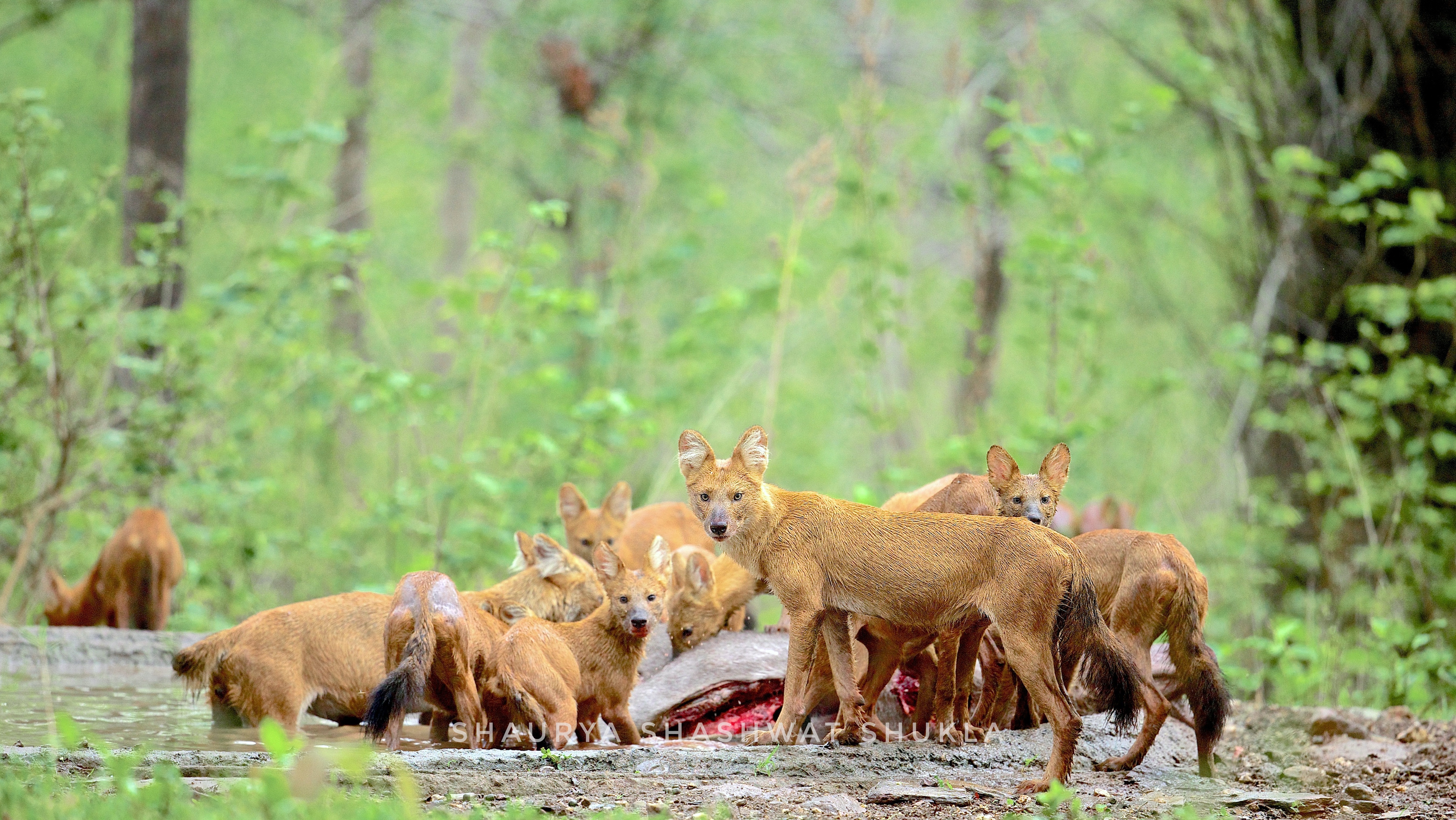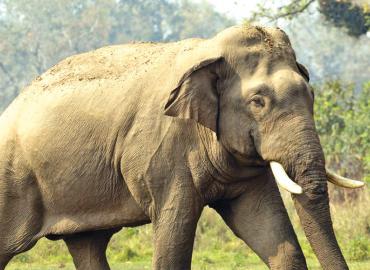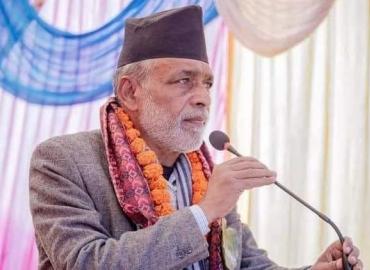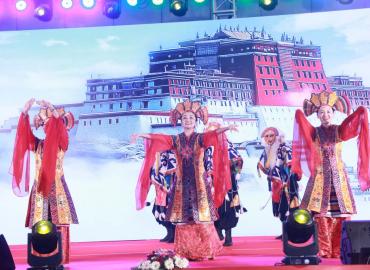prem bastola/ Rajendra Bhatt
Professor Hill
Kobayashi will be putting his thoughts regarding new technologies that shall be
used for wildlife monitoring. Arjun Shrivastav will be performing the red-list
assessment. Martin Gilbert will be presenting about the disease caused to wild
dogs and the preventive measures for such whereas Sujan Khanal will discuss the
reasons behind human-dhole conflict and potential solutions.
A week-long 'International Wild Dog Conference” will be held
in Nepal organized by Dhole Working Group (DWG) under the Candid Specialist
Group. 15 Dhole conservation activists working in the field of conserving dhole
from around the world will be joining this conference starting from the 18th
of Jestha to 24th of Jestha at Sauraha. National Nature Conservation
Trust will be co-hosting this very conference and Nepal Foresters' Association
will assist in making it a success.
Wild dog (dhole) found in South-Asian region is listed under endangered mammal after tiger in the IUCN Red list. As per the report of Dhole Working Group (DWG) under the Candid Specialist Group the density of dholes around the world is stipulated to be from the range of 4500-10500, out of which 989-2215 are expected to be adults. Various species of wild dogs are seen in especially in southern region of China, in India, Bhutan, Nepal, Myanmar, Thailand, Cambodia, Laos, Malaysia and in Indonesia. But, due to the lack of information regarding the distribution, density and reproduction of wild dogs, there was a confusion regarding the situation of this organism, mostly seen in South-East Asia. This confusion however will now be far away.

A week-long 'International Wild Dog Conference” will be held
in Nepal organized by Dhol Working Group (DWG) under the Candid Specialist
Group. 15 Dhole conservation activists working in the field of conserving dhole
from around the world will be joining this conference starting from the 18th
of Jestha to 24th of Jestha at Sauraha. National Nature Conservation
Trust will be co-hosting this very conference and Nepal Foresters' Association
will assist in making it a success.
What is Dhole Working Group?
IUCN
has a group named “Special Survival Commission” under which specialists are
chosen for various species. Under those groups, Dhole Working Group (DWG) is a
group of life minded environmentalist working especially for the dholes. As of
now, DWG has been working in conserving dholes under the Canid Specialist Group
of ICUN. Nucharin
Songsasen is the coordinator of this group who is involved with Smithsonian
Conservation Biology Institute.
Currently, there are 19 people working in this group, out of
which 15 will be joining the conference. Arjun Shrivastav and Girirsh Punjabi
from Wildlife Conservation Society- India, Independent Consultant Bhaskar
Acharya- India, Heike Maisch from Thüringer Zoopark Erfurt, Germany, Jan Kamler
from Wildlife Conservation Research Unit, University of Oxford, Kyran Kunkel
from Conservation Science Collaborative and University of Montana, Sheng Li
from Peking University, Phuntsho Thinley from Ugyen Wangchuck Institute for
Conservation and Environment Research, Linnea Worsoee Havmoeller from Natural
History Museum of Denmark, University of Copenhagen, Monsoon Pokharel Khatiwada
from Research Unit of Biodiversity, University of Oviedo, Spain, Ambika Prasad
Khatiwada from National Trust for Nature Conservation, Nepal, Patrick Roux from
Reserve Zoologique de la Haute-Touche, France, Pallavi Ghaskadbi from Wildlife
Institute of India, Martin Gilbert from Cornell Wildlife Health Center, Cornell
University are in this group and various students,
conservationists are assisting them in this campaign.
Workshop that happened in Thailand:
Keeping in mind the threatened situation of dholes, a workshop was done in Thailand for assessing the numbers of dholes and their habitat conservation. After that, this conference is going to be the first huge conference for the conservation of dhole. The conference to be held in Sauraha is preparing a ‘Dhole Conservation Action Plan' by discussing the global situation of dholes, prey species management, habitat protection and other issues. The work plan developing via this conference will be world’s first work plan for the conservation of dholes.
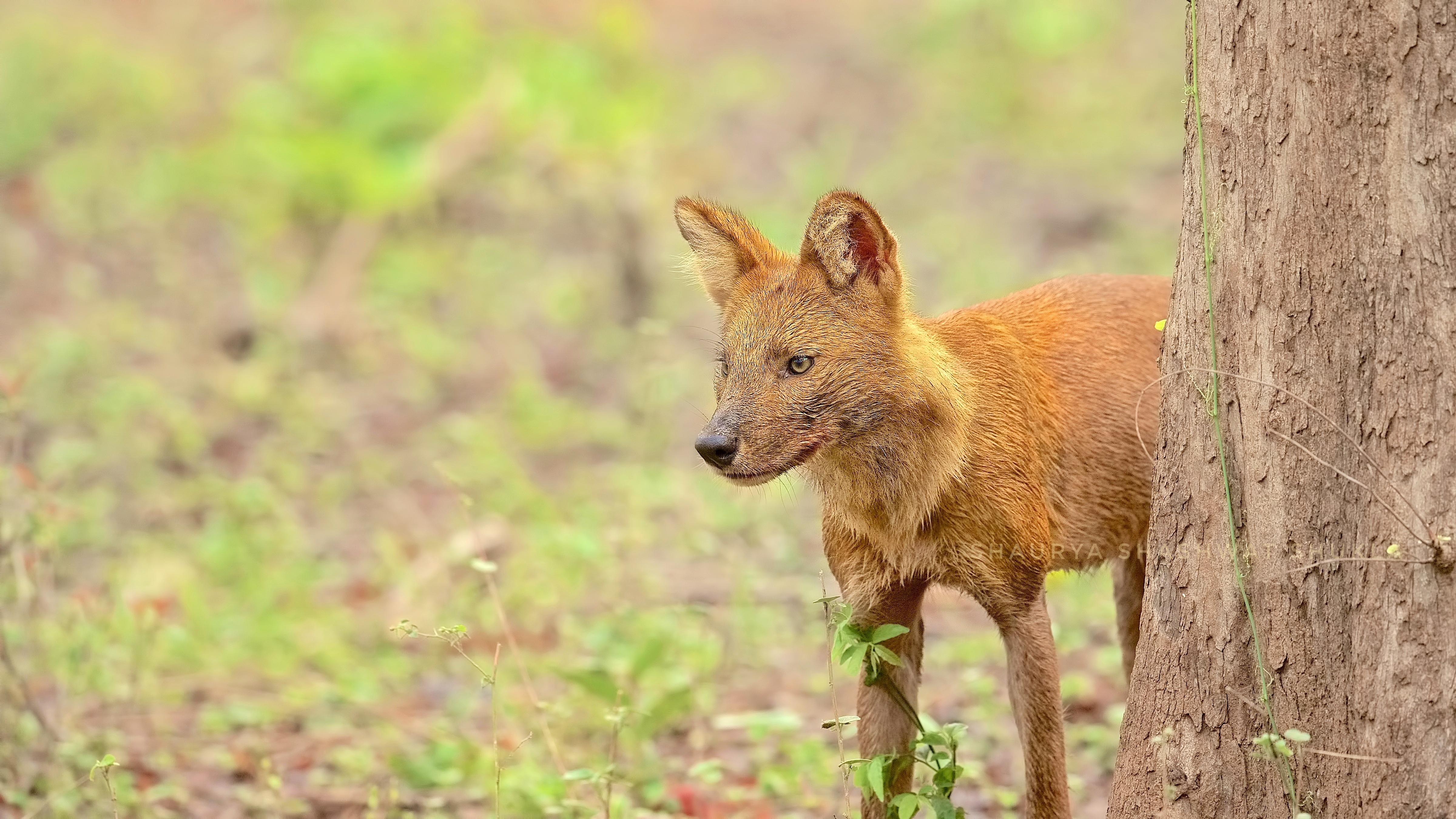
International Wild Dog Conference- 2023
Member from Nepal for DWG and the coordinator of this conference
Ambika Khatiwada says that this conference will be crucial for developing an
important ecological system by allocating the numbers and census of dholes. “We
will collect, update and catalogue the information regarding dhole from
different countries to determine its distribution and develop a global
perspective related to dhole” he says.
Another coordinator of the conference,
Sujan Khanal says that the conference will work on the assessing and making
error-free the various dimensions of human-dhole conflict, existing techniques
for conserving dhole. Whilst Khanal has been active in dhole conservation for the
last five years, Khatiwada has completed his masters’ degree in the study of
dhole on 2010.
What will happen on the conference?
The mutual meeting and interaction of the representatives of
different countries working on dhole conservation will make it clear about the
various dimensions of dhole conservation. First day will have an introductory
session whereas conservationists will be elaborating about the situation of
dholes in their respective countries from the second day. Representatives from
various countries will be publishing the information regarding the situation of
dholes, numbers, distribution, availability of food and things to be done for
the conservation of dholes in their respective countries. A Red List of dhole as an endangered species will
be made globally.
Dole conservationists Aakash Muntasir from Bangladesh, Tibidi from
Bhutan, Guan Taipei from China, Girish Punajbi from India, Sandy Noervianto
from Indonesia, Tan Cheng Cheng from Malaysia, Nwage Lwin from Myanmar, Ambika
Prasad Khatiwada and Sujan Khanal from Nepal and Khwanrutai Charaspet from
Thaliand will be present in the conference.
Professor Hill Kobayashi will be putting his thoughts regarding new technologies that shall be used for wildlife monitoring. Arjun Shrivastav will be performing the red-list assessment. Martin Gilbert will be presenting about the disease caused to wild dogs and the preventive measures for such whereas Sujan Khanal will discuss the reasons behind human-dhole conflict and potential solutions.
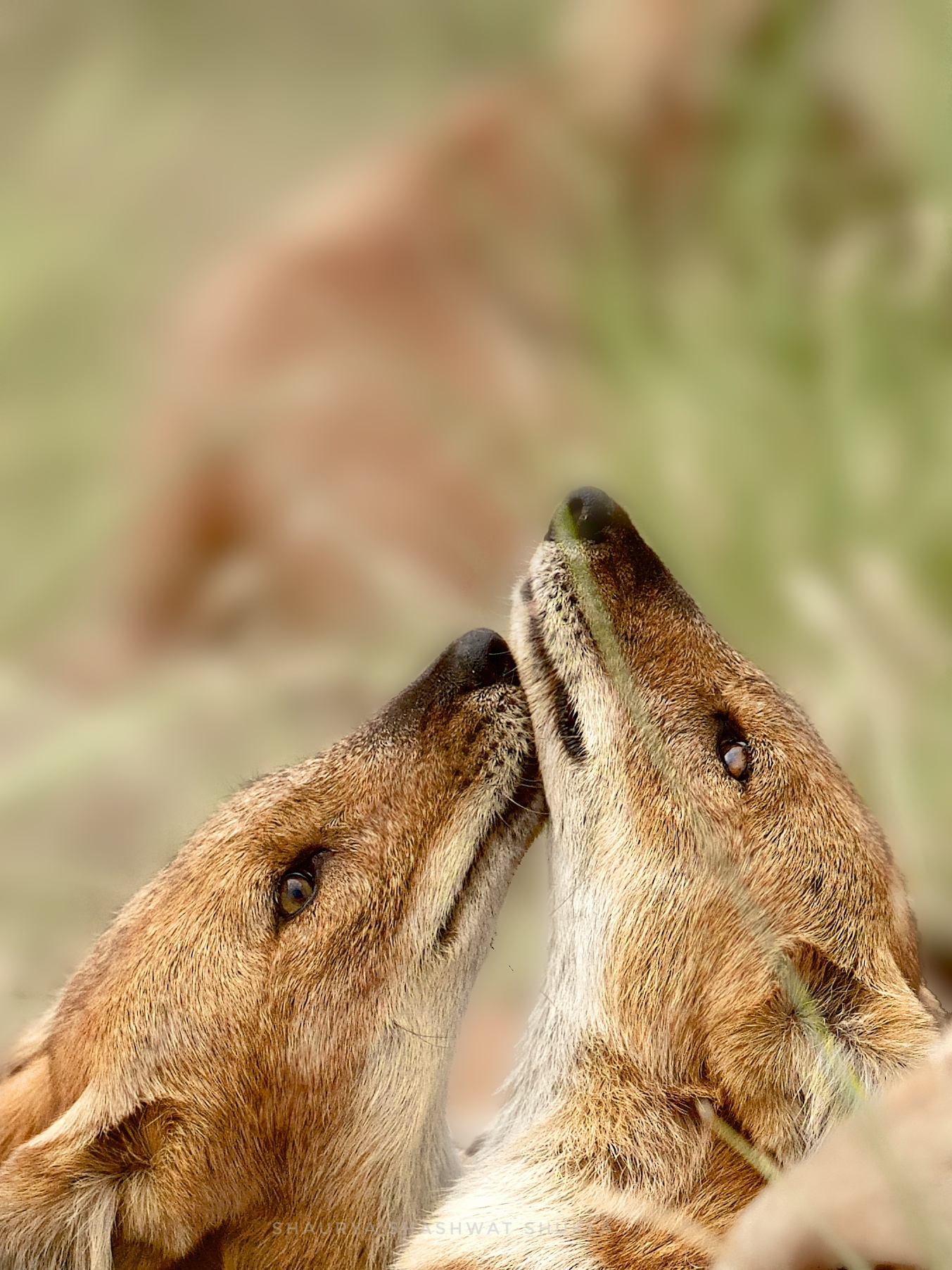
Forest and environment students working in the field of
dhole conservation will also present a working paper at the conference. Molly
Milson will be giving presentation about the record of the fossils used for the
conservation of dholes, while Trishna Rayamajhi, Abhinaya Pathak, Mansoon
Pokhrel, and Smriti Lama from Nepal will be presenting about their respective
experience and the situation of dhole in Nepal.
In this conference, where dhole protection action planning and
determination of dhole population world widely are kept in priority, the
members of DWG will be having one-day visit of Chitwan National Park and Parsa
National Park each. There will be an interactive discussion among the heads and
conservationists of various community forests and of buffer community forests,
as a part of the conference. This way, work plan for dhole conservation will be
implemented in Nepal along with Bhutan, Thailand and India via conference.
Why is this conference being
held in Nepal?
Based on geographical structure, India has larger number of
dholes. But, the number of dholes is not more than 250 in any conservation area
in the world. Having any rare species for more than 250 in numbers at a
conservation area is considered as valuable population. There exists no threat
of extinction in the place having valuable population. But unfortunately, there
is no official information of having 250 dholes in any conservation area yet.
Although Nepal is a small country in terms of area, dholes have been seen from
Chitwan to Kanchenjunga. Dholes have been found in Nepal from the lowlands
i.e., 67 metered Terai area to 5000 meters’ altitude. With the finding of
dholes, the interest of dhole conservation activists to protect them is one big
reason for conducting this conference in Nepal. Conservationists are however
active in finding out the existence of dholes in various other areas.
The conference was set to be held in Bhutan earlier but it
was not a success. “A tourist had to pay 400 dollars per day in Bhutan,
resulting to very high expenses. When the discussion was going on about where
to do it elsewhere, we said ‘we will do it in Nepal” said coordinator
Khatiwada. He added that Nepal being the first among the range countries in
terms of dhole conservation is also another reason for this conference to be in
Nepal. “We
are going to invite conservationists from all over the world to Nepal to make
an action plan for the protection of endangered species, this
is a pleasant moment for us” Khatiwada said.
Why Sauraha?
Coordinator
Khanal says there is no exact reason to hold the conference in Sauraha. “Since
the habitat of dholes is mostly in the forests around Sauraha, we are going to
have the conference here with an intention to show dholes to the guests who
come by. As the numbers of dhole is comparatively higher in Chitwan and Parsa
of Nepal, the habitat, nature and characteristics of dholes can be observed
closely”, he added, “Sauraha is just a venue, the concerned will be placed on
the dholes from all around the world.”
Khanal further clarified about the conference happening in
Sauraha also because the local organizer of the world-famous conference i.e.,
National Nature Conservation Trust, Biodiversity Conservation Center is in
Sauraha. This organization has an important role to play in making conservation
a success. Established by the King, this organization has been working for
conservation since last 40 years and making Nepal well known around the world;
getting to work with this organization is a pleasure” he said.
Future Course of Action:
Information regarding the numbers of dhole should be confirmed
prior to making future action plan, as per Khatiwada. “Till today we only have
a rough estimate of their population. We only know they were seen somewhere but
we can yet not confirm about it. For instance, 1-2 students had asked to work
on dhole and I agreed to it. Later they brought their report attaching the
picture of wolf. This is why, collecting the enough information about dholes
will be our very first action” he said.
Khanal told to had invited the heads of about 800-900 community forests. “We will be performing a social survey with them, for which we have also prepared questionnaire of 15 questions. We will be reporting about information as to where dholes were seen and their condition, via survey. After deriving the information from survey, we will work on collecting physical evidences as next step. By identifying the areas where dholes are found, we will gather information about the challenges to conservation and will be starting discussion for the required programs which address the issues. This way, we will reach to a concrete decision after the interaction. Thus, we have taken this conference as an opportunity” Khanal said.

He said that after making work plan for the dhole
conservation, work shall be done both in capacity building and management of
resources for safe habitat to increase the numbers of dholes. Along with this,
Khanal also pointed out in the need of carrying forward the works related to
conserving clean water resources and forest, capacity building to bear the
consequences of climate change, making the best use of wetland areas, in
parallel. Similarly, he expressed his confidence that through the conference,
the number of dholes will increase globally in the next ten years and more than
250 dholes can be seen in Chitwan-Parsa and other areas.
He also shared his sorrow towards how instead of government
who should have been showing interest in the global issues and protection of
threatened species, only limited people are working for it. “Government should
have made action plan on its own and should have moved forward with it, but it
has not done so. As a result, a very limited people are bearing this
responsibility; it is a sad part. The
government should prioritize the conservation of dholes and help us or ask us
for help. It would be wiser to save them in small numbers rather to show their
remains” Khatiwada said.
He said that at this time when foreigners are paying
special attention to wildlife conservation, it is necessary for Nepal to show
the world that it is protecting certain species. “Financial assistance is
required for conservation. It is not possible to do it on our own. If we could
show them that we are protecting endangered species like dholes, we can
possibly appeal them for help. Because the conservation of any animal anywhere in the world is good not
only for that country but for the entire world” Khatiwada said.

